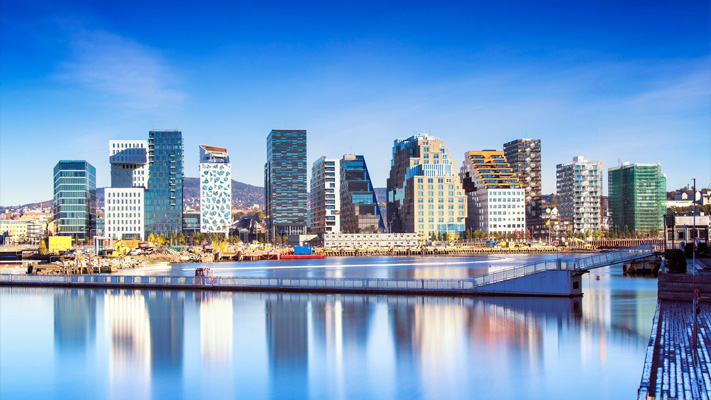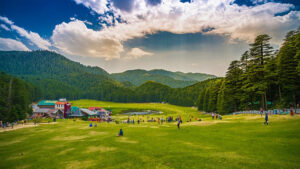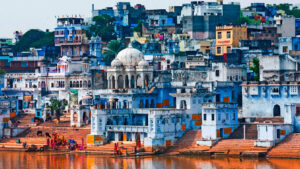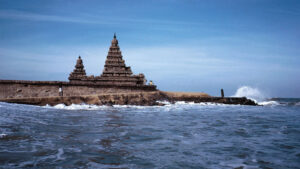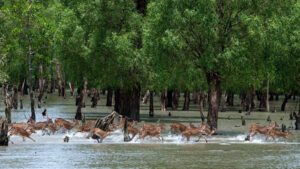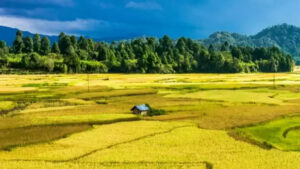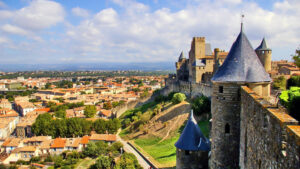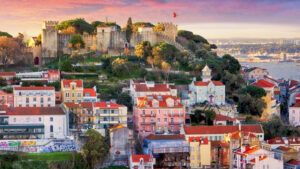BEST WAY TO ENJOY OSLO, NORWAY – WHERE SCANDINAVIAN BEAUTY AND URBAN CHARMS UNITE

Oslo, the capital city of Norway, is a vibrant and cosmopolitan destination known for its stunning natural beauty, rich history, and progressive urban culture. Situated on the shores of the Oslofjord and surrounded by lush green forests, Oslo seamlessly blends modernity with its deep-rooted Nordic heritage. It is a captivating destination that seamlessly combines modernity with its rich Nordic heritage. This vibrant metropolis is renowned for its stunning natural beauty, world-class museums, progressive urban culture, and commitment to sustainability. From its striking modern architecture and historic landmarks to its thriving arts scene and delectable Scandinavian cuisine, Oslo offers a diverse array of experiences for visitors to explore. Whether you seek breathtaking landscapes, cultural immersion, or a taste of Scandinavian design and innovation, Oslo is a city that captivates with its charm, creativity, and seamless blend of past and present. Here’s an overview of what makes Oslo a captivating city to explore:

- Scenic Splendor: Oslo boasts breathtaking natural landscapes that are easily accessible from the city center. From the iconic fjord views to the nearby forests, lakes, and parks, nature lovers will find ample opportunities for outdoor adventures, hiking, and skiing in the winter months.
- Cultural Hub: Oslo is a thriving cultural hub, home to world-class museums, art galleries, and architectural marvels. The Nobel Peace Center, the Viking Ship Museum, the Munch Museum, and the Oslo Opera House are just a few of the city’s renowned cultural institutions that offer insight into Norway’s history, art, and innovation.
- Modern Architecture: Oslo is celebrated for its striking modern architecture. The cityscape is adorned with contemporary structures such as the Oslo Opera House, known for its sleek design and the opportunity to walk on its sloping roof, and the futuristic Oslo Barcode district, featuring a cluster of high-rise buildings.
- Historic Landmarks: Oslo also boasts a rich historical heritage. Visit the Akershus Fortress, a medieval castle that offers panoramic views of the city and the fjord, and explore the Royal Palace, the official residence of the Norwegian monarch.
- Scandinavian Cuisine: Oslo’s culinary scene is thriving, with a focus on fresh, locally sourced ingredients. Sample traditional Scandinavian dishes such as gravlaks (cured salmon), kjøttboller (meatballs), and open-faced sandwiches known as smørbrød. Don’t forget to try the famous Norwegian waffles and indulge in delicious pastries.
- Sustainable Living: Oslo is renowned for its commitment to sustainability and green initiatives. The city prioritizes eco-friendly transportation options, including an extensive network of electric buses and trams. Visitors can explore the city’s dedication to environmental consciousness through green spaces, parks, and eco-friendly urban planning.
- Outdoor Recreation: Oslo offers abundant opportunities for outdoor activities. Take a boat trip on the Oslofjord, rent a bike to explore the city’s numerous cycling paths, or visit nearby forests for hiking, skiing, and snowboarding in the winter.
- Scandinavian Design: Design enthusiasts will appreciate Oslo’s emphasis on Scandinavian design. Explore the trendy Grünerløkka neighborhood for boutiques, galleries, and design shops that showcase sleek, minimalist furniture, home decor, and fashion.
Top Attractions and Must Visit Places
Oslo, Norway offers a wealth of attractions and must-visit places that showcase its natural beauty, cultural heritage, and modern cityscape. Here are some of the top attractions to explore in and around Oslo:

- Viking Ship Museum: Discover the world’s best-preserved Viking ships, along with artifacts and historical exhibitions that provide insights into Norway’s Viking Age.
- Vigeland Park: Explore the largest sculpture park dedicated to a single artist, Gustav Vigeland. Admire over 200 bronze and granite sculptures, including the famous “Monolith” and “The Angry Boy.”
- Oslo Opera House: Experience the stunning architecture of the Oslo Opera House, where you can walk on the sloping roof for panoramic views of the city and the fjord.
- Holmenkollen Ski Museum and Tower: Visit the iconic Holmenkollen Ski Jump, which offers a ski museum showcasing the history of skiing, interactive exhibits, and a panoramic view from the top of the ski tower.
- Royal Palace: Explore the official residence of the Norwegian monarch, located in the heart of Oslo. Witness the changing of the guard and stroll through the Palace Park.
- National Gallery: Marvel at a vast collection of Norwegian and international art, including Edvard Munch’s iconic painting “The Scream.”
- Akershus Fortress: Step back in time at this medieval fortress offering stunning views of the Oslofjord. Explore the historical exhibits and enjoy the peaceful surroundings.
- Bygdøy Peninsula Museums: Visit the museums on the Bygdøy Peninsula, including the Fram Museum (dedicated to polar exploration), the Kon-Tiki Museum (showcasing Thor Heyerdahl’s expeditions), and the Norwegian Maritime Museum.
- Aker Brygge and Tjuvholmen: Enjoy the vibrant waterfront district of Aker Brygge, known for its lively atmosphere, waterfront promenade, restaurants, shops, and modern architecture. Nearby Tjuvholmen offers contemporary art galleries and stylish waterfront residences.
- Oslofjord: Take a boat tour or ferry ride along the Oslofjord to appreciate the stunning coastal scenery, islands, and picturesque landscapes surrounding the city.
Special Cuisine
Oslo offers a range of special cuisine that reflects the country’s culinary traditions and natural resources. Here are some dishes and culinary experiences to try in Oslo:

- Smoked Salmon: Norway is famous for its high-quality salmon, and Oslo is an excellent place to indulge in this delicacy. Enjoy thinly sliced, smoked salmon served on bread or in traditional Norwegian dishes like Smørbrød (open-faced sandwiches).
- Gravlaks: Gravlaks is a traditional Norwegian dish of cured salmon. The salmon is marinated with a mixture of salt, sugar, dill, and spices, resulting in a flavorful and tender fish that is often served with a mustard and dill sauce.
- Fårikål: Fårikål is Norway’s national dish and a hearty traditional meal consisting of lamb stewed with cabbage, whole black peppercorns, and a touch of flour. It is typically enjoyed during the autumn months.
- Krumkake: Krumkake is a thin, delicate, and crispy Norwegian waffle-like cookie made from flour, sugar, butter, and cream. It is often rolled into a cone shape and filled with whipped cream or other sweet fillings.
- Rakfisk: Rakfisk is a traditional Norwegian fermented fish dish. It is made by curing freshwater fish, such as trout or char, in a salt mixture and allowing it to ferment for several months. It is typically served with bread, potatoes, and onions.
- Brunost: Also known as brown cheese, brunost is a uniquely Norwegian cheese made from the whey of goat’s milk or a combination of goat’s milk and cow’s milk. It has a sweet and slightly caramelized flavor and is often enjoyed on bread or crackers.
- Aquavit: Aquavit is a traditional Scandinavian spirit that is often enjoyed as an aperitif or with meals. It is typically made from potatoes or grains and flavored with herbs and spices, giving it a distinct and aromatic taste.
- Norwegian Craft Beer: Oslo has a thriving craft beer scene, with numerous microbreweries and brewpubs offering a wide variety of locally brewed beers. Explore the city’s beer bars and breweries to sample unique and flavorful Norwegian craft beers.
These are just a few examples of the special cuisine and culinary experiences you can enjoy in Oslo.

Best Time to Visit
The best time to visit Oslo, Norway, depends on your preferences and the experiences you wish to have. Here’s a breakdown of the different seasons and what they offer:
- Summer (June to August): Summer is the peak tourist season in Oslo, as the weather is generally pleasant during this time. The city comes alive with outdoor festivals, events, and long daylight hours, including the Oslo Jazz Festival and the Øya Festival.
- Spring (April to May) and Autumn (September to October): Spring and autumn offer mild weather and fewer crowds compared to the summer months. Spring brings blooming flowers and foliage, while autumn paints the city in beautiful fall colors. These seasons are suitable for sightseeing, visiting museums, and enjoying cultural events like the Oslo Kulturnatt (Culture Night) and the Oslo World Music Festival.
- Winter (November to March): Winter in Oslo can be cold with temperatures ranging from -10 to 5 degrees Celsius (14 to 41 degrees Fahrenheit). However, it’s a magical time to visit if you enjoy winter activities like skiing, snowboarding, and ice skating.
It’s important to note that weather in Oslo can be variable, and it’s advisable to check the forecast before your visit.



